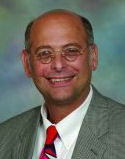That smell
Certain diseases have characteristic odors.
It was a rare, stiflingly hot July day in Minnesota, and I was in the doghouse. I was supposed to have bought chicken for a dinner party. I was sure I had purchased some, but there was none to be found in the house. I went out to my car, which was like an oven; the last time I had driven it was a few days before, to the grocery store. I put my key in the lock and popped the trunk, and was hit with an olfactory bomb of epic proportions. I had found the missing bag of chicken.
There is something powerful and essential about a strong odor. Marcel Proust, in Remembrance of Things Past, describes olfactory memory as an enjoyable accompaniment to his tea and cake: “Immediately the old gray house upon the street, where her room was, rose up like a stage set…and the entire town, with its people and houses, gardens, church, and surroundings, taking shape and solidity, sprang into being from my cup of tea.”

In this case, as the trunk opened, I was not transported to a lovely place. Instead I was on a ward in a VA hospital. I was standing by the bedside of a most unfortunate young man, an early case of AIDS, with bilateral pleural effusions. I stood instructing my intern in needle placement. I hit my trainee with what little pieces of wisdom I had gained in my extensive experience, of a half dozen pre-ultrasound-guidance attempts at thoracocentesis.
“Percuss the fluid level. Go above the rib. Take your time. Hurry up.” The usual worthless kibitzing. As the trocar plunged through the patient's emaciated flesh, a gushing stream of anaerobic goo shot out, covering my intern in a severely malodorous sludge. It was the smell of death. Suddenly, I heard the sound of retching from many of the other 29 beds of the open ward. The ward smelled for days.
This was not my first time to battle against odiferous overload. I had volunteered in a morgue as a pre-med. (Anything to get into medical school.) The smell of cadavers, especially one that had floated in a lake for a week, left a lasting impression on my olfactory cortex. By comparison, my cadaver in medical school was much blander. Unlike our colleagues of generations past, who had to limit their dissection time to the winter months in order to tolerate the decomposing smell of bodies, I had merely to cope with formaldehyde's pungent odor.
Certain diseases have characteristic odors. It is easy in our hygienic environment to be distanced, but a strong smell can permeate the nursing unit and be unmistakable. Walking down the hallway, you can sometimes make the diagnosis without entering a single room: melena in 104, infected diabetic foot ulcer in 106.
Some conditions take getting up close and personal. The fruity smell of ketones is a prime example. Whether the patient has diabetic ketoacidosis, or was chugging antifreeze, if the smell isn't coming from Juicy Fruit gum, you can guess the cause. The smell of urine can be most instructive, whether sweet from diabetes, burnt caramel-scented from maple syrup urine disease, or rancid from asparagus consumption.
Other characteristic smells you will find on rounds include the fishy smell of bacterial vaginosis; the eye-watering ammonia odor of an unwashed patient with incontinence and a urinary tract infection; the unique fragrance of a maggot-infested wound; the sulfuric sensation of malabsorptive flatulence; and worst of all, the halitosis of the post-call intern. And of course there is the smell of the imbiber, whether patient or staff member.
As I drove to the hospital after our dinner party, I was surrounded by the smell of death. Luckily, in this instance, it was merely deceased poultry. Nonetheless, it was quite fowl.



